Bored with burritos? Tired of tacos? Learn how to make tostada shells and you’ll have a new vehicle for all of your favorite Mexican food.
A tostada shell is a thing of beauty: crispy, like a chip, but large and flat, and sturdy enough to hold a respectable mélange of toppings. Here, we’ll show you a traditional and easy way to make tostada shells on the stovetop, so that you’ll be well on your way to a memorable Mexican meal.
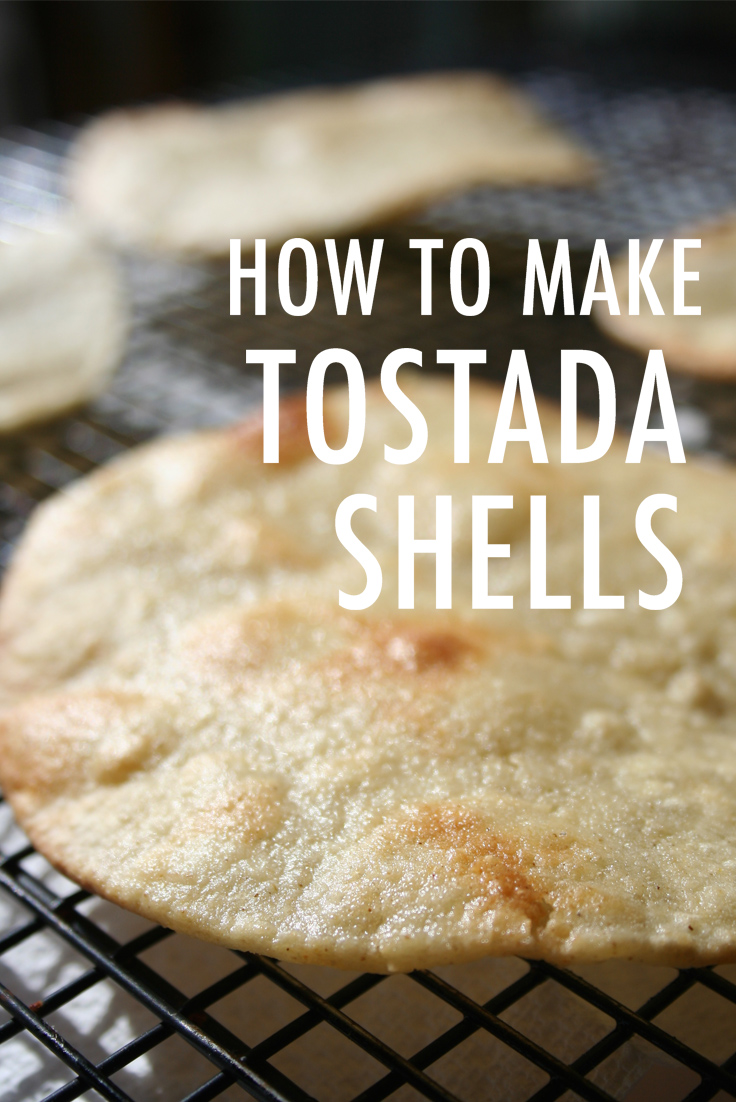
Tostada shells are easy to make, and make for a crispy, crunchy vehicle for Mexican cuisine.
What is a tostada shell?
The word “tostada” comes from the Spanish word for “toasted.” In food form, a tostada is a small, flat, crispy tortilla. Typically, it gets its crispy texture from a brief period of deep-frying in a vegetable based oil, though baked varieties exist, too.
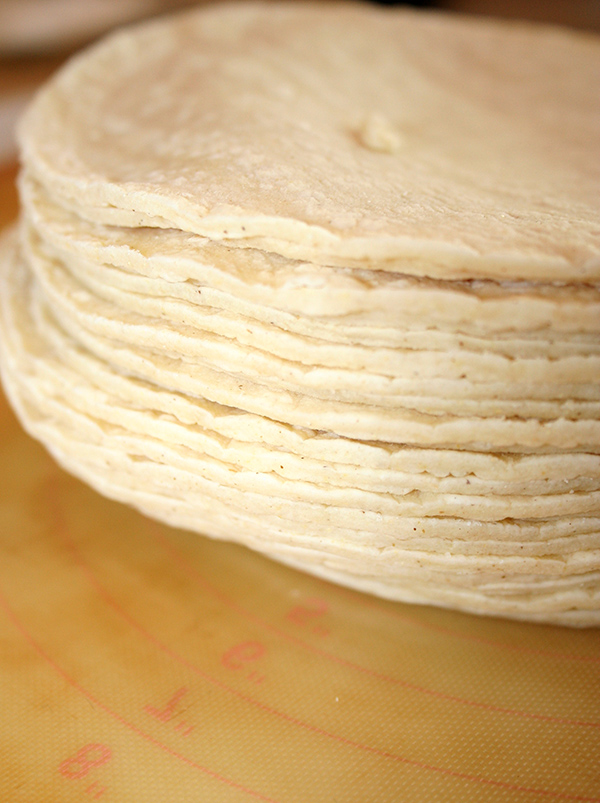
Photos via CakeSpy
What type of tortilla is used to make tostada shells?
Traditionally, tostada shells are made using corn tortillas, which tend to be a bit thicker and heartier than flour tortillas. That having been said, it wouldn’t be absolutely unheard-of to see a tostada shell made from a flour tortilla. Regardless of the tortilla type, the size of a tortilla used to make a tostada is fairly small, about 5-6 inches in diameter or less. This smaller tortilla size allows for the tostada shell to remain sturdy even with toppings piled on.
Note: You can make your own tortillas for this recipe by following our homemade taco shells recipe. Simply follow the steps for soft taco shells; you can use the tortillas from that recipe to make tostada shells.

How to make tostada shells
Makes 8; can scale to fit your needs
Ingredients:
- 8 corn tortillas
- Enough vegetable oil (or oil with a high smoke point) to fill a skillet 1/4 inch full
Supplies:
- Deep skillet with a heavy bottom
- Tongs, for flipping
- Wire rack
- Paper towels
Step 1 (optional):
Prepare the tortillas for frying. Set your oven to 300 F, and place the tortillas on a baking sheet. A little overlap is fine. Place the sheet in the oven right away while it preheats. Let the tortillas warm in the oven for 8-10 minutes (the oven may come to full heat during this time; that’s fine).
While this step is optional, it will remove excess moisture from the tortillas so that they will remain crisp once fried.
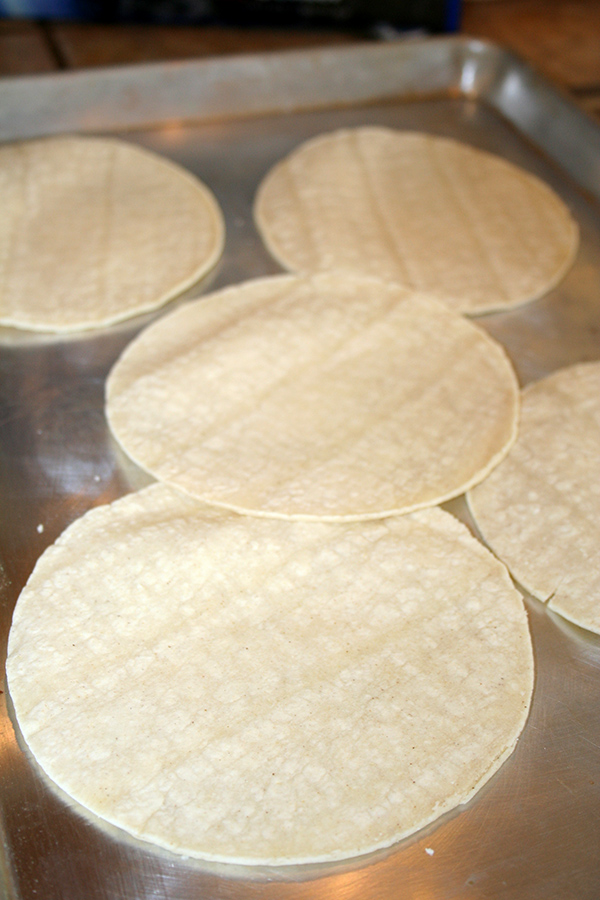
Step 2:
Get your mise en place. Have your ingredients at the ready, and set up a wire rack atop paper towels near where you will be frying.
Step 3:
Pour the oil in your skillet, so that there is a level of about 1/4 to 1/2 inch of oil in the pan. Place the pan on medium heat. You can check that the oil is hot enough by breaking off a tiny piece of one of the tortillas and putting it in the pan — if it begins to bubble up, then the oil is ready for frying.
Step 4:
Place one tortilla in the hot oil. Let it cook for 30 seconds, or until browned to your liking. You can check by gently using the tongs to lift up the tortilla. Once browned to your liking, flip, and cook the second side.

Step 5:
Once finished, lift the tortilla out of the hot oil, let the excess oil drip off, and then place on the wire rack. Repeat this process with the remaining tortillas. If the level of oil becomes too low, add more.
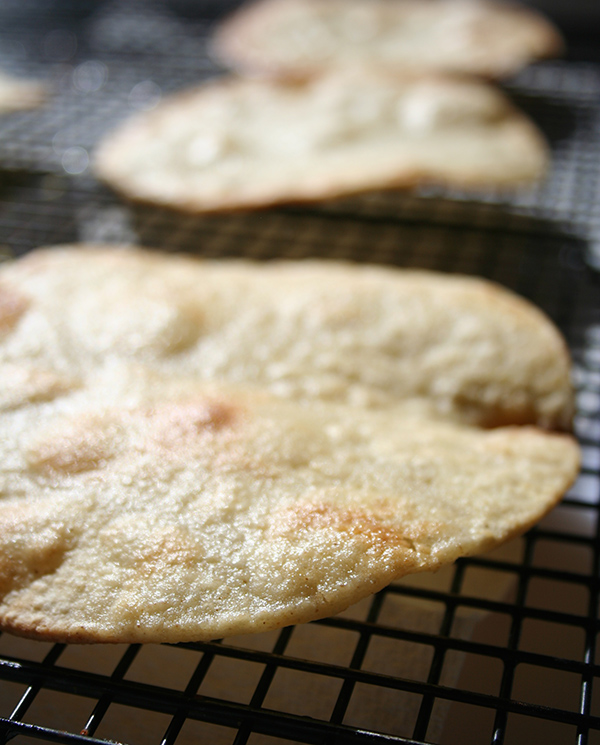
Once finished, you can top the fried shells with whatever fixings you’d like. These ones are topped with a mixture of ground beef with taco seasoning, sour cream, guacamole, cheddar cheese, diced tomato, and cilantro.
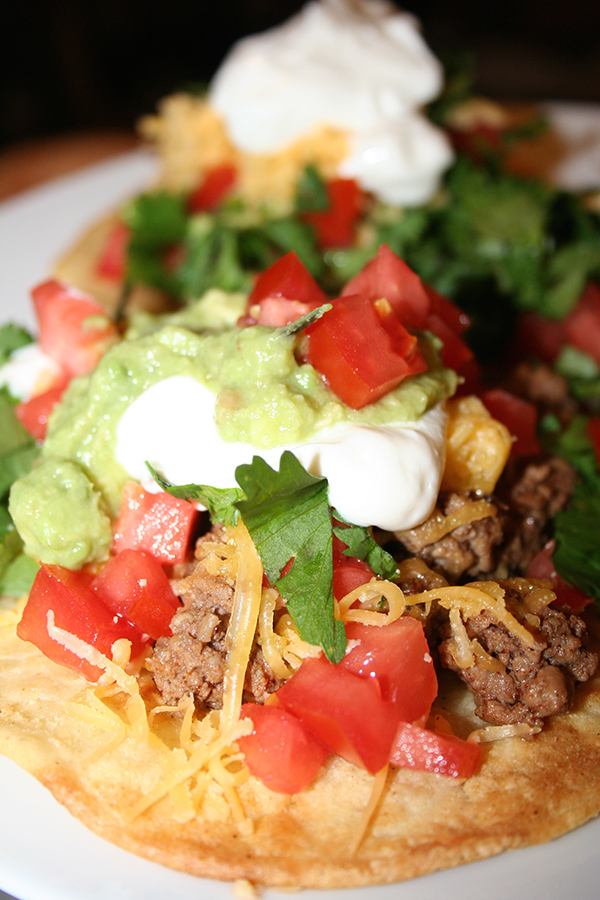
Interested in exploring Latin American street food? Check out Craftsy course Latin American Street Food: Empanadas, Arepas, and Tostadas.
What’s your favorite Latin American street food?

Share tips, start a discussion or ask one of our experts or other students a question.
No Responses to “Crispy, Crunchy, Delicious: How to Make Tostada Shells on the Stovetop”